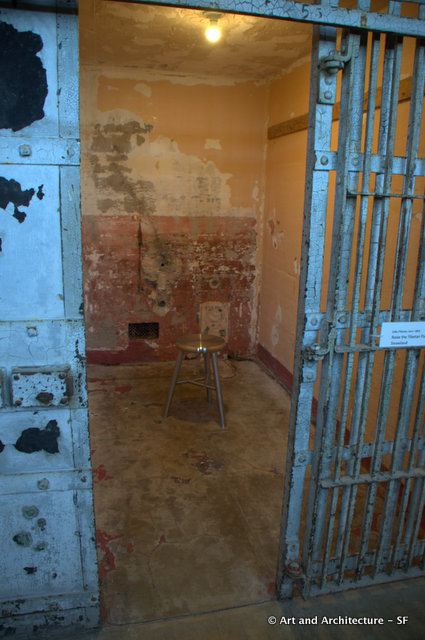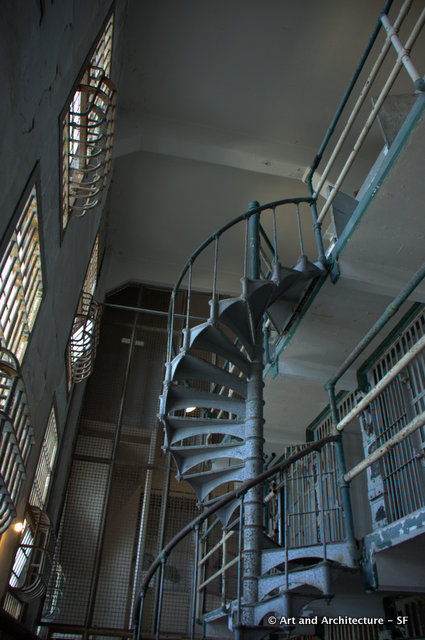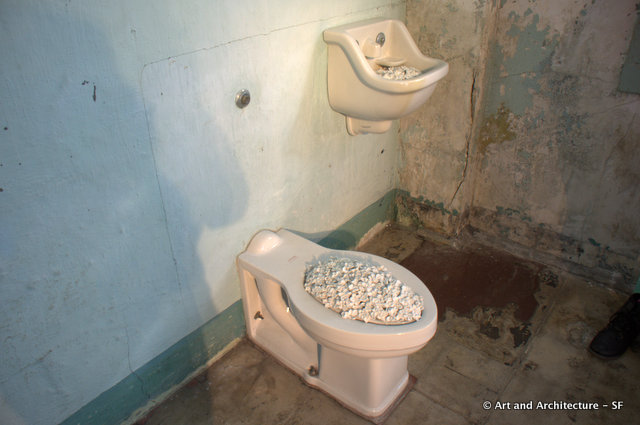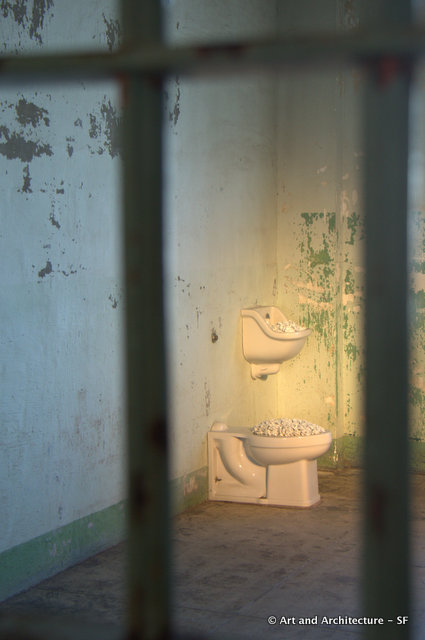Alcatraz Island
September 27, 2014 to April 26, 2015
There are two audio exhibits in this exhibition. The first can be found in the first floor, cell block A of the Cellhouse. Inside each cell, you can stand, although, as you can see, stools are provided, while you listen to spoken words, poetry, and music by people who have been detained for the creative expression of their beliefs, as well as works made under conditions of incarceration. There are 12 cells and each cell features a different recording. You can hear things as diverse as Tibetan singer Lolo, who has called for his people’s independence from China; the Russian feminist punk band Pussy Riot, opponents of Vladimir Putin’s government; and the Robben Island Singers, activists imprisoned during South Africa’s apartheid era.
All of the audios can be heard here.
The poetry or spoken words are in the language of the author so Martin Luther King was the one that I most understood, however, music is universal and those were where I found myself spending the most time.
In the hospital area are two more audio installations. They are in side by side tiled chambers in the Hospital, that were once used for the isolation and observation of mentally ill inmates. They are a Tibetan Chant and the chants of the Eagle Dance of the Hopi. The Tibetan chant is a Buddhist ceremony for the goddess Palden Lhamo, protectress of Tibet; it was recorded at the Namgyal Monastery in Dharamsala, India, a monastery historically associated with the Dalai Lama. The Hopi music comes from a traditional Eagle Dance invoking the bird’s healing powers. Hopi men were among the first prisoners of conscience on Alcatraz, held for refusing to send their children to government boarding schools in the late 19th century. If you would like to get a sense of those two chants you can listen here.
What I came for, and was only slightly disappointed in, not because of the installation but because of the concept that you have to keep people an arms length away from art, was Blossom.
To me this is quintessential Ai Weiwei. The curator tells you that: The work could be seen as symbolically offering comfort to the imprisoned, as one would send a bouquet to a hospitalized patient. The profusion of flowers rendered in a cool and brittle material could also be an ironic reference to China’s famous Hundred Flowers Campaign of 1956, a brief period of government tolerance for free expression that was immediately followed by a severe crackdown against dissent.
I have always felt that Ai Weiwei has a strong connection with porcelain and that his creative juices seem to flow through this medium.
One of my favorite Ai Weiwei quotes.
“The misconception of totalitarianism is that freedom can be imprisoned. This is not the case. When you constrain freedom, freedom will take flight and land on a windowsill.”





